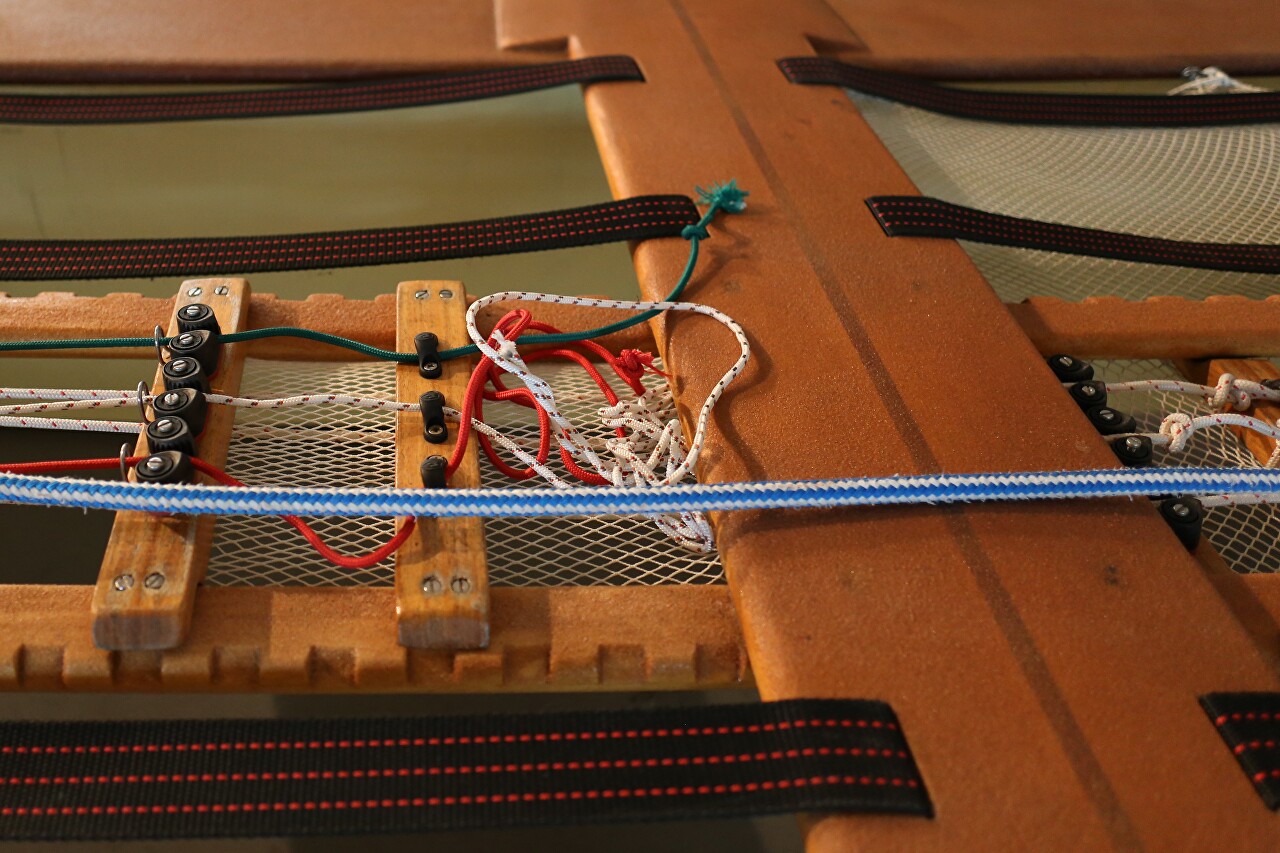Catalan Сatamarans (Patín a vela)
One of the sections of the Maritime Museum of Barcelona is dedicated to traditional Catalan catamarans, called Patín a vela or Patín catalán.
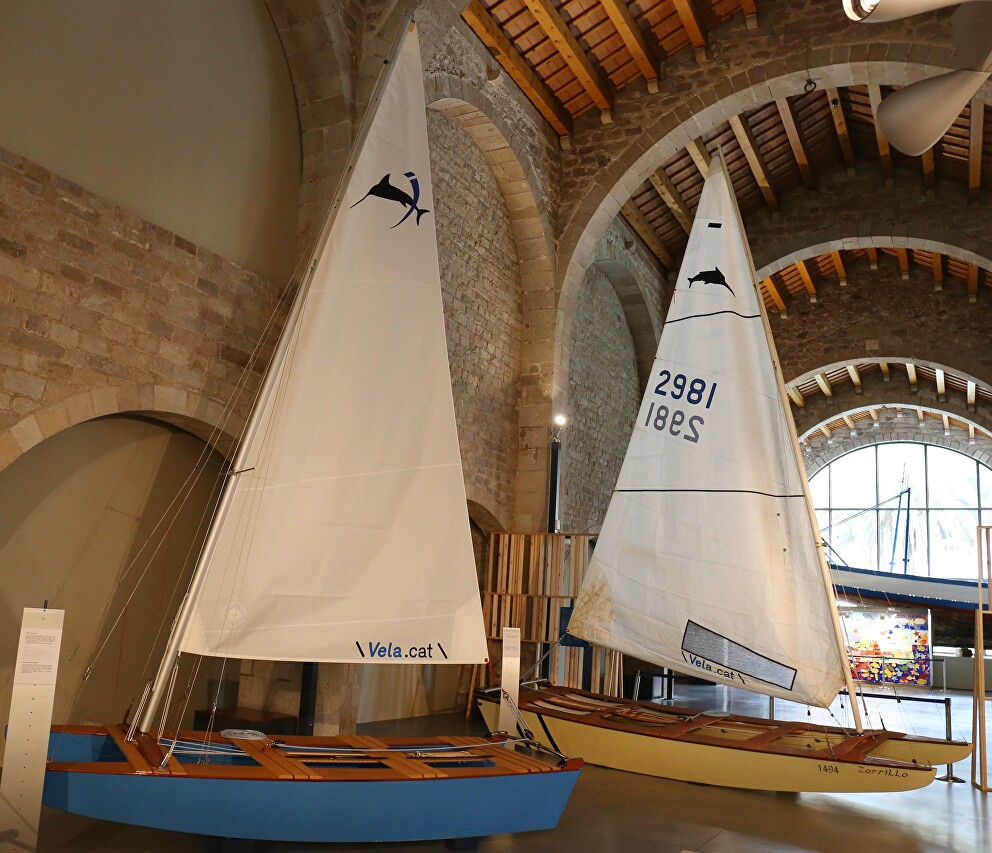
The concept was developed by the Mongé brothers in 1942 as a vessel for "beach" use. The original design consisted of two narrow hulls connected by a solid deck that was driven by two oars. The large width eliminated the risk of capsizing and such a vessel could be handled by a person without special training. Since maneuvering was performed using oars, the inventors did not consider it necessary to provide the ship with a rudder. In practice the boat was bulky and too heavy for one rower and did not gain popularity among water lovers.
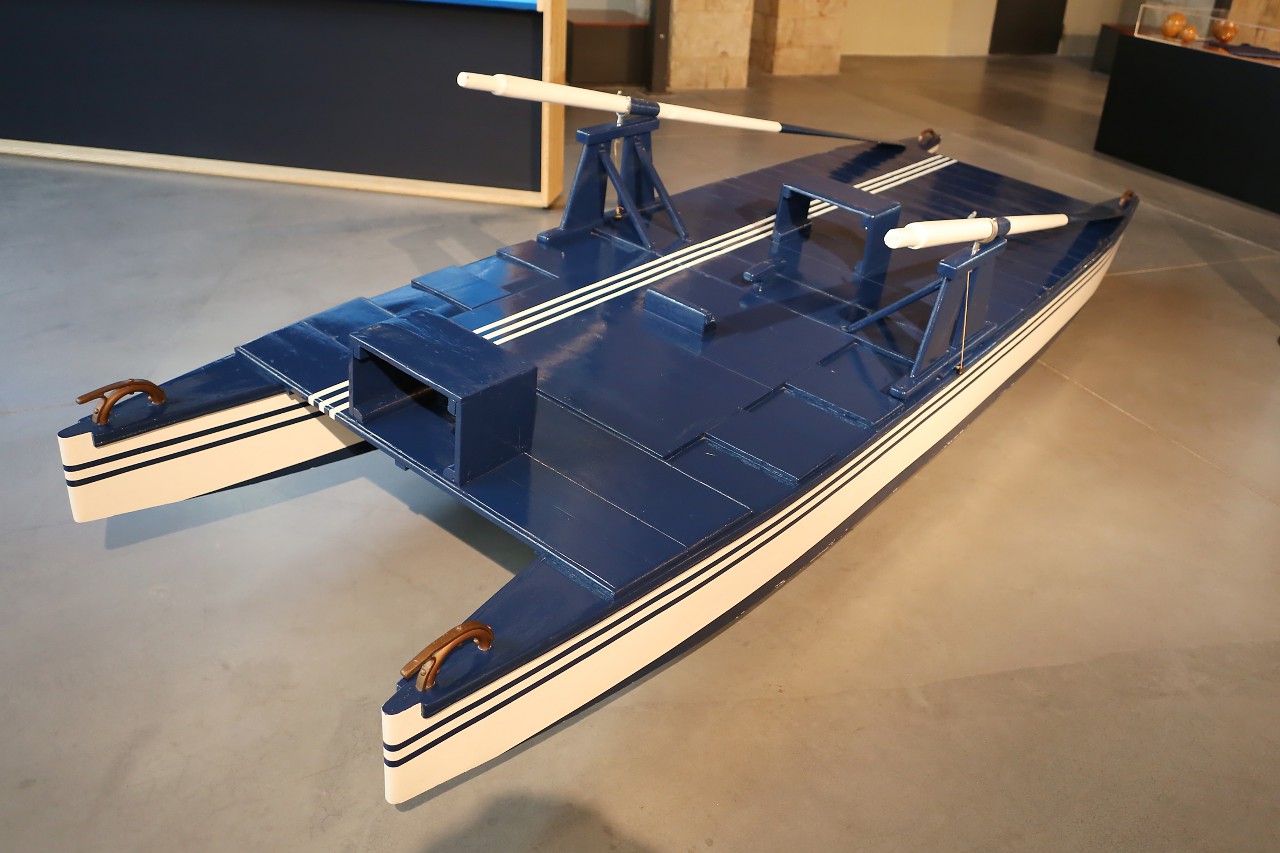
Then the authors provided the catamaran with a mast, significantly reduced the width, and replaced the solid deck with cross bars. Thus, the "beach" catamaran turned into a sports vessel, which was quickly appreciated by yachtsmen.
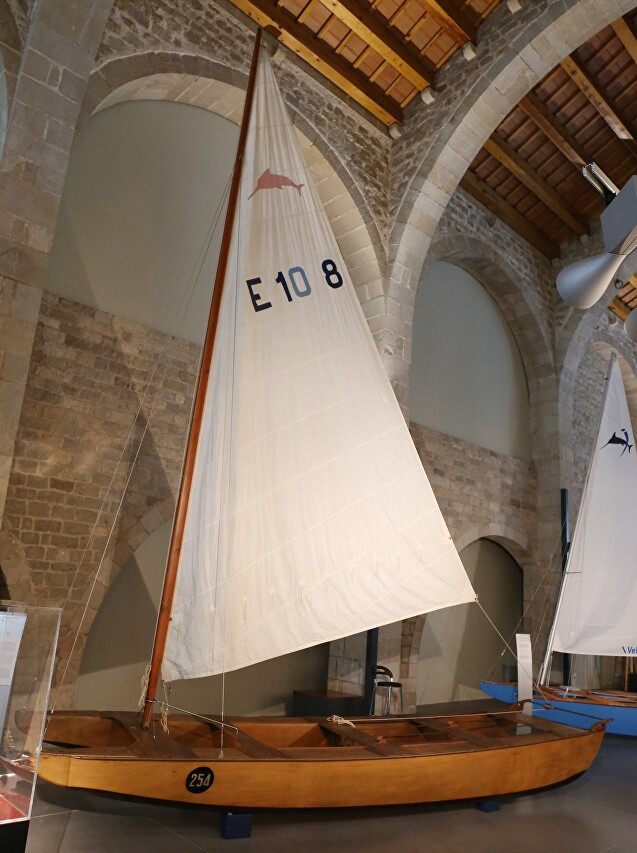
On a Catalan catamaran, there is no false keel or shvert that provides stability, this function is again performed by the yachtsman, keeping the vessel from capsizing with his weight.
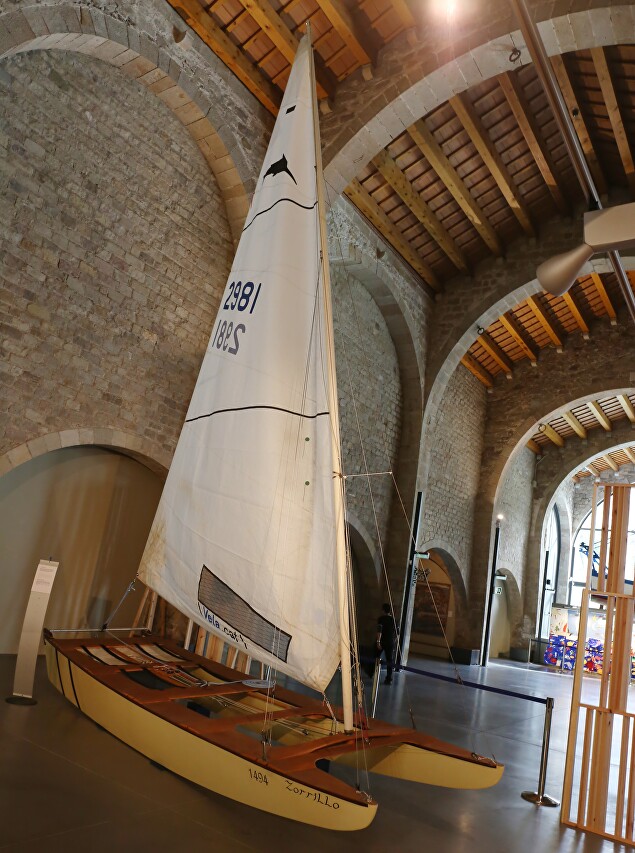
Since there was no rudder in this version, maneuvering is performed solely by moving the yachtsman to create the desired angle of inclination. Maneuvering is also helped by the special shape of the sail, which forms a "dovetail" at the base, which allows you to change its plane.
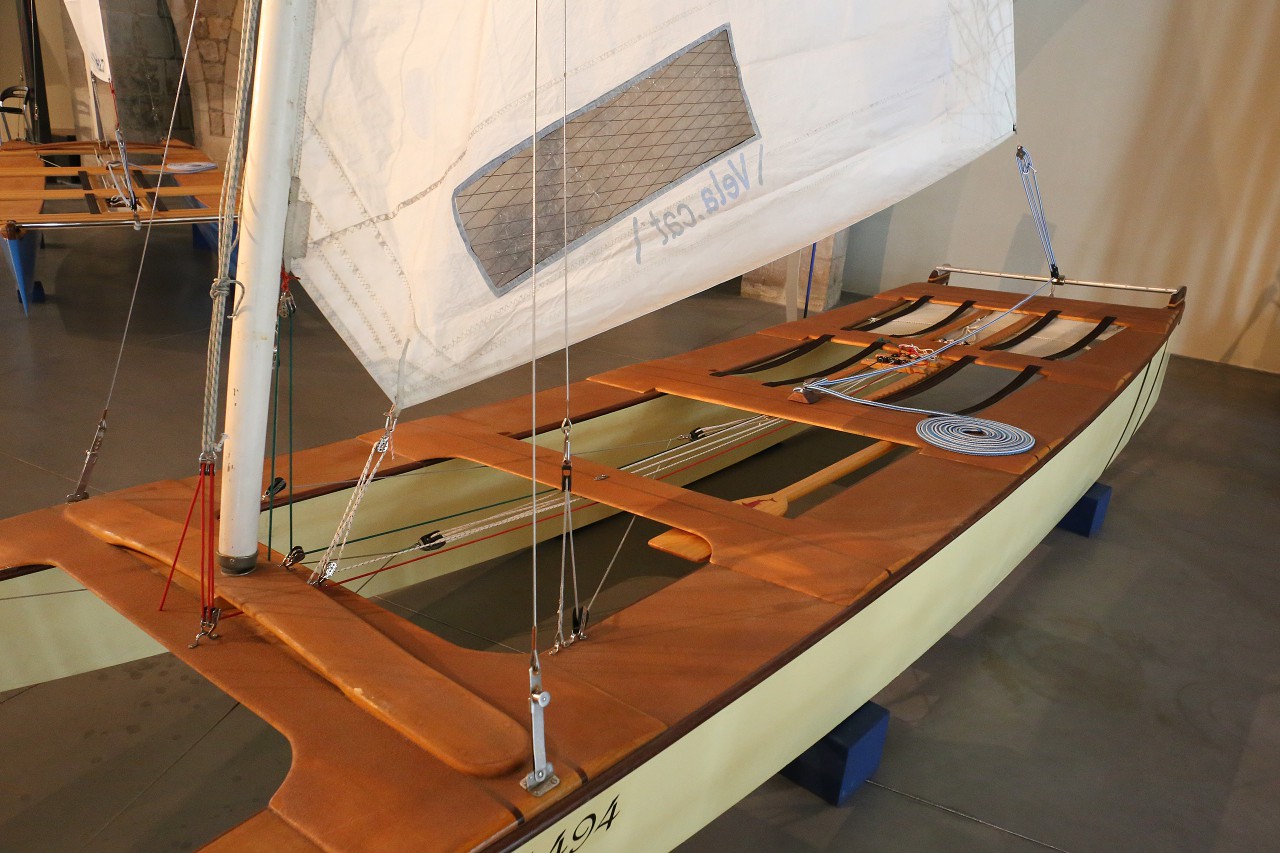
The triangular sail is controlled by a loop that freely slides along a metal arc in the stern of the vessel.
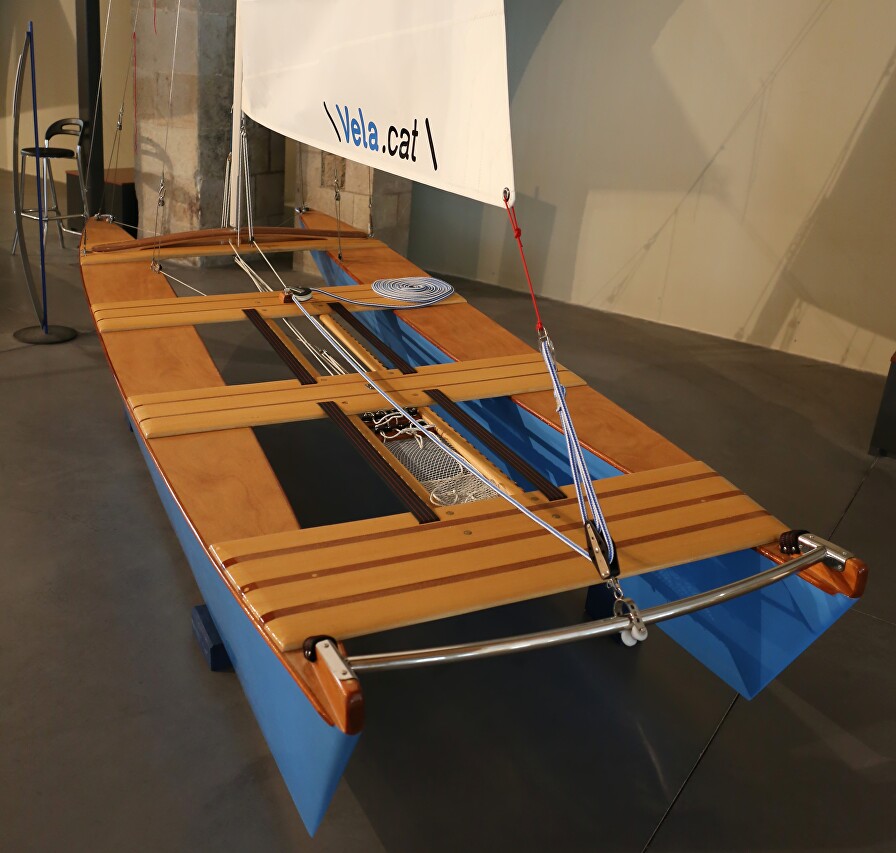
In addition, the lifting and lowering of the sail along the height of the mast is used for control. It is quite difficult to manage such a vessel, so all the control halyards are concentrated in one place.
